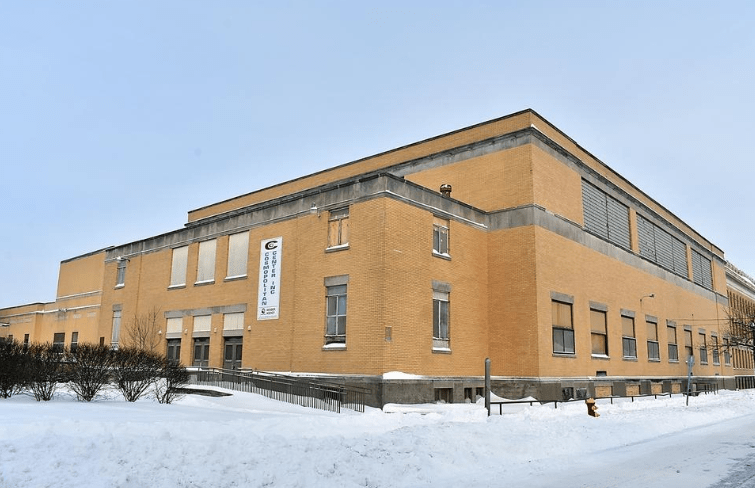
Cornhill Neighborhood Community Center Feasibility Study
Efforts are underway to breathe new life into the former Utica Free Academy gymnasium in the city’s Cornhill neighborhood.
Efforts are underway to breathe new life into the former Utica Free Academy gymnasium in the city’s Cornhill neighborhood.
The Community Foundation of Herkimer and Oneida Counties plans to pay for necessary repairs to parts of the 1402 Elm St. building, such as the building’s roof, electrical system and sump pump installation.
The renovations, estimated to cost $49,400, are needed for the Community Foundation to explore a greater use for the building: as an impact center capable of offering community services from various nonprofits.
“The grant that we’ll be awarding the city for $49,400 will be used to stabilize the building in anticipation of a feasibility study, that will begin soon, to determine whether or not we can move ahead with a much larger project to transform the building into the kind of community impact center to serve that neighborhood,” said John Swann, executive vice president of the Community Foundation. “Without stabilization of the building, there’s nothing that can happen from this point forward.”
The Utica Common Council moved last week to authorize a formal application for the cost of the renovations. City officials are expecting the Community Foundation to cover the cost, including any overruns.
The $49,400 figure is based on work estimates by contractors procured by the city, Brian Thomas, the city’s commissioner of Urban and Economic Development, told the council last week. Swann said the Community Foundation’s goal is to start the feasibility study sometime this quarter once renovations are complete.
The building contains a gym with multiple basketball courts as well as classroom space. Abutting the Oneida Center for Rehabilitation and Nursing as well as Mohawk Valley Health System’s Sister Rose Vincent Family Medicine Center, the building has been vacant for a number of years, Thomas said.
Thomas said the city foreclosed on the property last year; that August, the city’s Urban Renewal Agency authorized the Community Foundation access into the building to allow for a feasibility study.
Cornhill neighborhood leaders in recent years have clamored for a neighborhood community center.
“The short answer is when you look at the data, this is at the heart of a neighborhood that’s had serious socio- and economic-health problems for quite a long time,” Swann said. “We’re hoping that if the feasibility study points us in the right direction and this project comes to pass, we’re hoping that this could be part of a solution for that neighborhood.”
Whether the Community Foundation moves forward on its plans depends on the feasibility study — something that also would likely determine the potential uses for the gym floor, Swann said.
Defining a traditional community center as something used for gatherings or recreational meeting space, Swann said the impact center concept differs in that it would bring together services from multiple nonprofits in one place tailored to meet a certain community’s needs.
Swann said the Community Foundation has had preliminary discussions with some area nonprofits to gauge interest.
“We don’t look at this as a single solution for a single neighborhood’s problems,” Swann said. “We look at this as a pilot to similar impact centers that could be positioned in other neighborhoods with their own needs.”

